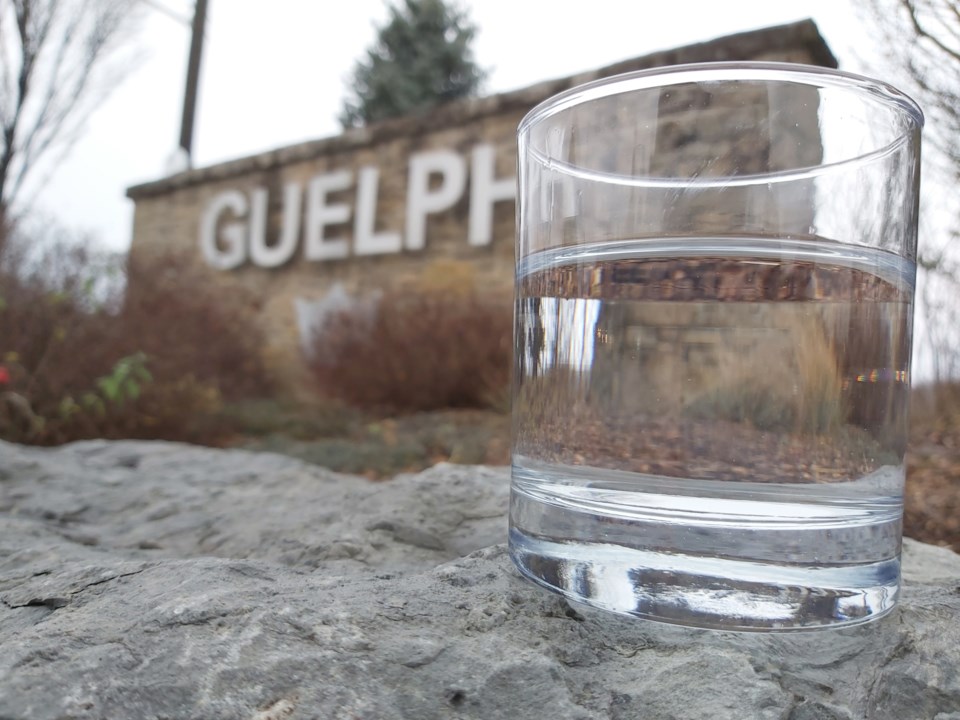Water plays a major role as the city looks to accommodate mandated growth and adjust to the impacts of climate change, such as drought and more intense storms.
With that in mind, officials are eyeing a new water well line beyond the municipal border, larger underground piping, 15 additional stormwater facilities and more.
Those are among the recommendations coming from updates to the city master plans for water and wastewater, as well as stormwater. Though the reports were approved by council in April, their final versions are now out for public comment as part of the approvals process, with a Sept. 17 deadline for feedback.
“Recommendations include a suite of projects and programs that support keeping our level of service … today and into the future,” city project manager Colleen Gammie told GuelphToday. “It’s a very large set of projects and programs, so we will be looking at distributing it across the planning horizon up to 2051.”
One of the key recommendations regarding drinking water supply is to twin the Arkell well line ( a second supply line from the same well) that sits on city-owned land in Guelph/Eramosa township, in order to produce some redundancy in the system. If the current line failed, there would still be a functioning supply.
That aqueduct accounts for about 70 per cent of the city’s water supply.
“As a result of the failure analysis completed, the Arkell aqueduct and the Woods (pumping station) were both flagged as being highly critical for water servicing,” states the consultant’s report, which notes the Woods pumping station is supplied by the Arkell well. “It was found that if either were to fail in the model, the existing system would run out of water in approximately 12-24 hours, under existing average day demand (ADD) conditions.”
A second Arkell line would allow one to be shut down for repairs or maintenance work, while the second line keeps water flowing, the report explains.
“Many models predict the weather will become more extreme for both heat and precipitation,” it adds. “If the weather becomes hotter with less precipitation, water consumption will increase and may put a strain on the water distribution system.”
That project, Gammie explained, would require an environmental assessment (EA) to consider design options and seek public input in order to develop a recommendation for city council to consider.
In addition, the plan calls for a variety of distribution system upgrades, such as the installation of larger piping, in order to accommodate higher demand from an increased population – the city is mandated by the province to reach a population of 208,000 by 2051, up from about 140,000 now.
“There’s lots of segments of pipes throughout the city that need to be upsized for both water and wastewater,” said Gammie. “That will be happening when we go and reconstruct those roads.
“That’s the bulk of the work."
In order to deal with stormwater, consultants are urging city officials to create 15 new stormwater management facilities, including 11 in parks. The preferred option in most cases is for underground water storage.
However, surface ponds are proposed for Margaret Greene Park on Westwood Road, the Guelph Junction Railway land on Stevenson Avenue, city-owned land at 606 Massey Rd. and at the end of Industrial Street along York Road (site of the former Royal City Jaycees Park).
The latter already has a couple of surface ponds, but they “do not currently perform a stormwater treatment function,” Gammie explained, noting they weren’t designed with that in mind. “The plan would be to retrofit the existing ponds to be able to have the desired quality and quantity function.”
That work, the project manager added, would be done in coordination with the York Road widening initiative. Efforts in that area – from Victoria Road to the city’s eastern border – are expected to begin next summer and be completed by winter of 2026.
Though the process doesn’t require public consultation regarding the stormwater management ponds plan, Gammie noted neighbourhood residents will be approached for input. Surface ponds will see an additional level of engagement.
“Public consultation and participation is really important,” Gammie said. “We anticipate there being lots of public consultation in order to make sure that those communities are involved and get to participate in the design alternatives and the final design for those facilities.”
As required by the process, anyone wishing to provide comments on the reports and their contents has until Sept. 17 to do so. They can be submitted to Reg Russwurm, the city’s manager of design and construction, via email to [email protected].




